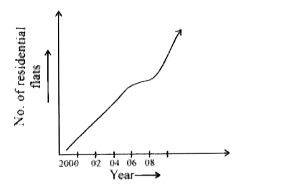Identify each part in a flowering plant and write whether it is haploid (n) or diploid (2n)
Anther , ovary, egg, pollen, zygote , male gamete. Solution in Tamil
a. Ovary - diploid (2n)
b. Anther - diploid (2n)
c. Egg - haploid (n)
d. Pollen - haploid (n)
e. Male gamete - haploid (n)
f. Zygote - diploid (2n)
Topper's Solved these Questions
- BOOK - NEW JOYTHI PUBLICATIONCHAPTER - REPRODUCTION IN ORGANISMSEXERCISE - New Evaluation Type Questions10videos
REPRODUCTION IN ORGANISMS
- BOOK - NEW JOYTHI PUBLICATIONCHAPTER - REPRODUCTION IN ORGANISMSEXERCISE - Questions from Previous HSE5videos
REPRODUCTION IN ORGANISMS
- BOOK - NEW JOYTHI PUBLICATIONCHAPTER - PRINCIPLES OF INHERITANCE AND VARIATION EXERCISE - PREVIOUS YEAR COMPETITIVE EXAM QUESTIONS72videos
PRINCIPLES OF INHERITANCE AND VARIATION
- BOOK - NEW JOYTHI PUBLICATIONCHAPTER - REPRODUCTIVE HEALTH EXERCISE - PREVIOUS YEAR HSE QUESTIONS4videos
REPRODUCTIVE HEALTH
Similar Questions
1. Study the relation of the given pair and fill up the blanks
a. Bud : Hydra : : ........ : Penicillium
b. Algae : Zoospores :: Sponges : ........
c. Monoecius palm: Coconut :: Dioecious palm : ………...
d. Primates : Menstrual cycle : : Non primates : ……….....
e. Unisexual male : Staminate : : Unisexual female : …………..03:08View SolutionPeople prefer more seedless fruits than seeded ones.
a. Name the process concerned with development of seedless fruits.
b. Suggest a method for production of such fruits artificially.03:14View SolutionEpistatic effect in which the dihybrid cross AaBb * AaBb resulting in the ratio 12:3:1 is due to___________.
02:44View Solution
The number of residential flats arose in a city of Kerala is shown above.
a. Does this reflect the increase of city population only ?
Suggest any two effective methods to control over population in Kerala.03:34View SolutionHow many given structures are haploid ? Ovary, anther, egg, pollen, male, gamete, zygote
02:08View SolutionIdentify each part and write whether it is haploid (n) or diploid (2n), in a flowering plant. (a) Ovary (b) Anthre (c) egg (d) pollen (e) male gamete (f) zygote
06:39View Solutionप्रत्येक पुष्पीय पादप के भाग को पहचाननें तथा कि वह अगणित (न) है या द्विगुणित (2n) । (क) अंडाशय ____________________ (ख) परागकोष ____________________ (ग) अंडा (या डिम्ब) ____________________ (घ) पराग ____________________ (च) नर युग्मक ____________________ (छ) युग्मनज ____________________
02:02View Solutionप्रत्येक पुष्पीय पादप के भाग को पहचानिए तथा लिखिए कि वह अगुणित (n ) है या द्विगुणित (2n ) -
(क) अण्डाशय, (ख) परागकोश, (ग) अण्ड का डिम्ब , (घ) परागकण , (ड़) नरयुग्मक, (च) युग्मनज ।03:14View Solutionनिम्नलिखित में बताएँ कि कौन अगुणित है और कौन द्विगुणित:
(a) अण्डाशय
(b) परागकोश
(c) अण्डा
(d) पराग
(e) नर-युग्मक
(f) युग्मनज।01:20View SolutionIdentify each part in a flowering plant and write whether it is haploid (n) or diploid (2n).
(a) Ovary ______
(b) Anther _________
(c) Egg _________
(d) Pollen __________
(e) Male gamete ________
(f ) Zygote _________View Solutionप्रत्येक पुष्पीय पादप के भाग को पहचानें तथा लिखें कि वह अगुणित (n) है या द्विगुणित (2n)
04:05View SolutionIdentify each part and write whether it is haploid (n) or diploid (2n), in a flowering plant.
(a) Ovary (b) Anther (c) egg (d) pollen (e) male gamete (f) zygote01:32View SolutionIdentify each part in a flowering plant and write whether it is haploid (n) or diploid (2n). (a) Ovary ------------------------ (b) Anther ---------------------- (c) Egg --------------------- (d) Pollen ---------------------- (e) Male gamete --------------------- (f) Zygote -------------------------
02:26View SolutionIdentify the part of each flowering plant and write whether it is haploid (n) or diploid (2n) (a) ovary (b) anther (c) egg (dub) (d) pollen (f) male gamete (g) zygote
01:20View SolutionIdentify ploidy of following parts of a flowering plant respectively Ovary, Anther, Eqq, Pollen, Male gamete, Zygote
02:10View Solution

